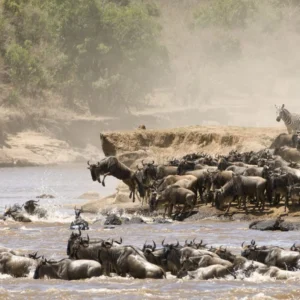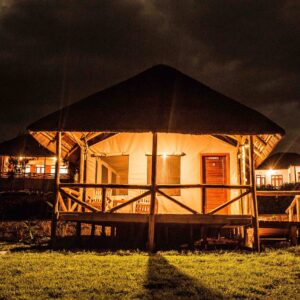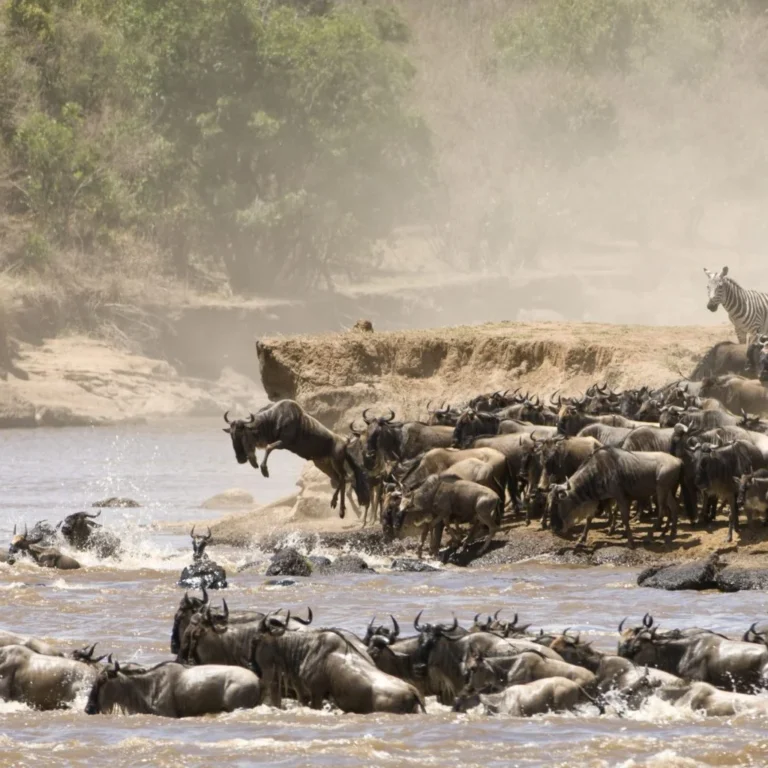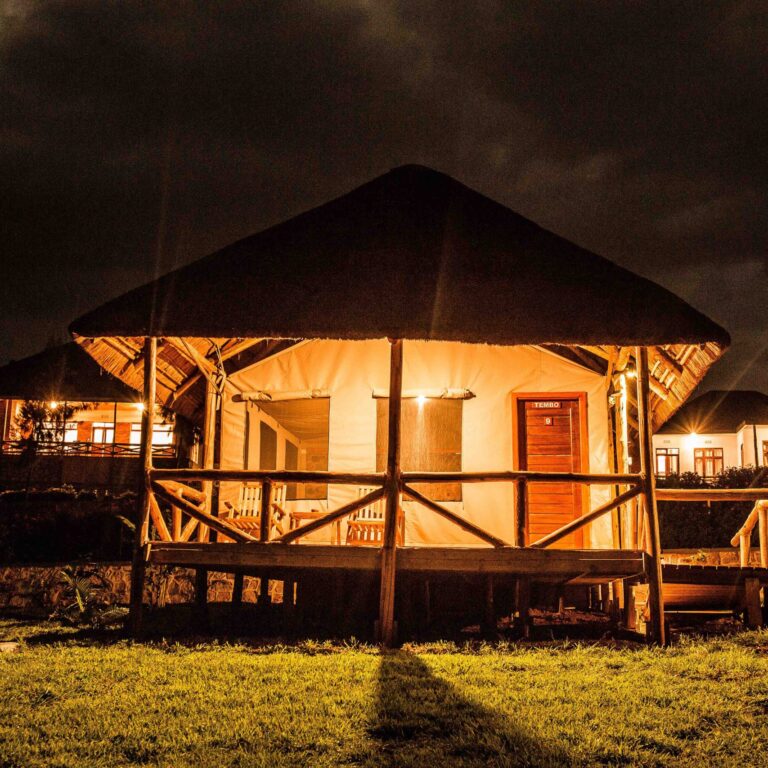Chasing Graceful Grazers: Tracking the Thomson's Gazelle on Tanzania Safaris.
In the vast, sun-drenched plains of Tanzania, amidst the thundering herds of wildebeest and the stealthy movements of predators, a smaller, yet equally iconic, antelope darts with remarkable agility: the Thomson’s Gazelle (Eudorcas thomsonii). Often affectionately nicknamed “Tommie,” this graceful creature is a quintessential sight on any East African safari, instantly recognizable by its slender build, distinctive black flank stripe, and constantly twitching tail.
Thomson’s Gazelles are not just beautiful; they are a vital thread in the intricate tapestry of the savanna ecosystem, serving as a primary food source for many of Africa’s most famous carnivores. While they are abundant, knowing where to look and understanding their behavior can enhance your chances of truly appreciating these nimble inhabitants of the plains during your Tanzania safari.
Where to Spot Thomson’s Gazelle During Tanzania Safaris? Thomson’s Gazelles thrive in open grasslands and savannas, making them a common sight across Tanzania’s premier national parks, particularly those in the Northern Safari Circuit.
1. Serengeti National Park: The Ultimate Gazelle Haven
The Serengeti National Park is, without a doubt, the prime location for spotting Thomson’s Gazelles. Its vast, open plains provide the ideal habitat for these grazers. They are found throughout the park where to can spot Thompson’s gazelle during Tanzania Safaris. Often in large herds, their numbers swell even further during the Great Migration, as they join the wildebeest and zebras on their epic journey. The short-grass plains of the southern Serengeti, especially during the calving season (January to March), are particularly rich in gazelle sightings, as they too drop their young during this period of abundant new grass.
2. Ngorongoro Conservation Area: Abundance in the Crater
The Ngorongoro Conservation Area, particularly within the Ngorongoro Crater itself, offers incredibly consistent sightings of Thomson’s Gazelles. The crater floor’s lush, contained grasslands provide a year-round haven for a resident population of these gazelles. Their high density within the crater makes them easy to spot, often seen grazing alongside wildebeest and zebras, and frequently serving as prey for the crater’s numerous lions and cheetahs.
3. Tarangire National Park: Diverse Landscapes, Plentiful Gazelles
While Tarangire National Park is more famous for its elephants and baobab trees, it also hosts a healthy population of Thomson’s Gazelles, especially in its more open grassland areas where to can spot Thomson’s gazelle during Tanzania Safaris. As the park’s vegetation thins out during the dry season (June to October), gazelles, along with other herbivores, congregate around the permanent water sources of the Tarangire River, making them easier to spot. They add to the park’s rich biodiversity and are a common sight during game drives.
4. Lake Manyara National Park: A Smaller, Diverse Habitat
Lake Manyara National Park, though smaller in size and known for its tree-climbing lions and flamingos, also supports populations of Thomson’s Gazelles in its open grassland and acacia woodland sections. While not as abundant as in the vast Serengeti or Ngorongoro, where to spot Thompson’s gazelle during Tanzania Safaris. Their presence here contributes to the park’s diverse ecosystem. Spotting them amidst the park’s varied landscapes adds to the charm of a Manyara safari.
Tips for Spotting Thomson’s Gazelles
To spot Thomson’s gazelles, focus on East African savannas and grasslands, especially in areas like the Serengeti. Look for their reddish-brown coats with white underparts and distinctive black stripes on their flanks. Binoculars and a keen eye for movement are helpful, as they are small and can blend with the surroundings. While Thomson’s Gazelles are common, a few tips can enhance your viewing experience and help you appreciate their unique behaviors:
Time of Day. Like many plains animals, Thomson’s Gazelles are most active during the cooler parts of the day – early mornings and late afternoons. This is when they are typically grazing, moving, and more likely to be engaged in interactions that are fascinating to observe. During the midday heat, they often rest in the shade.
Observe from a Distance. Thomson’s Gazelles known for their vigilance. Their constant tail-twitching is a sign of alertness. Observe them with binoculars from a distance to witness their natural behaviors, such as grazing, social interactions, or their characteristic “pronking” without disturbing them.
Look for Mixed Herds. Thomson’s Gazelles often graze in mixed herds with other herbivores, particularly zebras and wildebeest. This collective vigilance provides greater safety in numbers against predators. If you spot a large herd of wildebeest or zebras, scan the edges for the smaller, more agile gazelles.
Listen for Alarm Calls. Thomson’s Gazelles highly alert and often act as early warning systems for other animals. They emit sharp, distinctive alarm calls (a loud snort or whistle) when they detect a predator. Listening for these calls can alert you to the presence of a lion, cheetah, or other carnivore in the vicinity, leading to thrilling predator-prey sightings.
Fun Facts About Thomson’s Gazelles
Thomson’s gazelles, also known as “tommies,” known for their speed and agility, reaching speeds up to 65 km/h (40 mph). They are found in the open grasslands of East Africa and are easily identified by their distinctive black stripe along their sides and their white rumps. They are also known for their social nature, forming herds and engaging in playful behaviors like “pronking” or “stotting”.
Named After a Pioneer. They named after Scottish explorer Joseph Thomson, who led the first European expedition through Maasailand in 1883.
The “Tommie” Nickname. They affectionately known as “Tommies” by safari guides and enthusiasts.
Distinctive Stripe. Their most recognizable feature the broad, black horizontal stripe along their flanks, separating their reddish-fawn upper coat from their white underbelly.
Constant Tail-Twitching. Thomson’s Gazelles almost constantly twitch their tails, a behavior believed to be a signal of their alertness to predators.
“Pronking” or “Stotting”. When startled or fleeing from a predator, they often engage in “pronking” (also called “stotting”) – a stiff-legged leap with all four feet off the ground simultaneously. This display is thought to signal their fitness and agility to the predator, potentially discouraging a chase.
Cheetah’s Primary Prey. Thomson’s Gazelles are a primary food source for cheetahs, who rely on their explosive speed to outmaneuver these nimble antelopes. The predator-prey dynamic between them is a classic safari spectacle.
Migration Participants. While some populations are resident, many Thomson’s Gazelles participate in the Great Migration, moving with the larger herds of wildebeest and zebras.
Beyond the Big Five: Appreciating the Smaller Wonders
While the “Big Five” often dominate safari aspirations, appreciating animals like the Thomson’s Gazelle offers a deeper understanding of the African ecosystem. These smaller, yet incredibly resilient and beautiful creatures, play a crucial role in the food chain and contribute significantly to the vibrant life of the plains. Their agility, vigilance, and distinctive behaviors just as captivating as those of the larger animals.
Beyond the Sightings: The Gazelle’s Role in the Ecosystem
Observing Thomson’s Gazelles goes beyond a mere sighting; it’s an opportunity to witness the delicate balance of nature. Constant grazing helps maintain the short-grass plains, which in turn support other herbivores. Role as primary prey for cheetahs, lions, and hyenas vital for the survival of these predators, illustrating the interconnectedness of all life in the savanna. Its presence a testament to the health and vitality of the ecosystem.
So, on your next Tanzania safari, take a moment to truly observe the “Tommies.” You’ll find that these agile, striped beauties not just background scenery but fascinating characters in the grand drama of the African wild.






